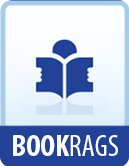[FN#5] A short account of this is in the story of King Dathi (O’Curry Lectures, p. 286). The tale seems to be alluded to in the quatrain on p. 10 of this volume.
There are very few corresponding allusions to personages from the small Etain cycle found in the great cycle of romances that belong to the Heroic Age, but MacCecht’s name appears in a fifteenth-century manuscript which gives a version of the tale of Flidais; and I suspect an allusion to the Etain story in a verse in the “Sick-bed of Cuchulain” (see note, p. 184). It may be observed that the introduction of Conor and his contemporaries into the story of Conary’s grandparents is an additional piece of evidence that our form of the story of Etain precedes the “antiquarian age”; for at that time the version which we have of the story of Conary must have been classical and the connection of Conor’s warriors with Conary well-known. A keen eye was at that time kept on departures from the recognised historical order (compare a note by Mr. Nutt in the “Voyage of Bran,” vol. ii. p. 61); and the introduction of Conor into our version of the tale of Etain must have been at an earlier date.
The two versions of the “Courtship of Etain,” the Egerton one, and that in the Leabhar na h-Uidhri, have been compared in the general preface to the volume, and little more need be said on this point; it may, however, be noted that eight pages of the Egerton version (pp. 11 to 18) are compressed into two pages in L.U. (pp. 23 and 24). References to the Etain story are found in different copies of the “Dindshenchas,” under the headings of Rath Esa, Rath Croghan, and Bri Leith; the principal manuscript authorities, besides the two translated here, are the Yellow Book of Lecan, pp. 91 to 104, and the Book of Leinster, 163b (facsimile). These do not add much to our versions; there are, however, one or two new points in a hitherto untranslated manuscript source mentioned by O’Curry ("Manners and Customs,” vol. ii. p 192 to 194).




